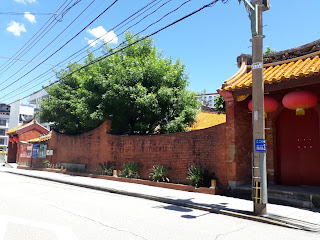As you may know Chinatowns are found in a few large cities in the world. I am sure that there are many more than I know, namely the one in Melbourne, and the one in Sydney as well as in San Francisco and New York.
Prior to my last trip to Japan, I only knew the one in Yokohama where I grew up. The biggest one in Japan. As far as I know, many shops are run by 2nd and 3rd generation Chinese-Japanese. There is a high school just outside the Chinatown for Chinese Japanese children.
When I was a kid growing up, Chinatown was always bustling with tourists as well as Yokohama locals, for us Yokohama locals, it was located close to other popular spots like Isezaki and Motomachi shopping malls, which made this place an ideal weekend leisure destination.
The Chinatown in Yokohama, I realise now is that it is more commercial than those in Nagasaki and Kobe.
The reason for this is probably due to the short history of this particular one. Even though Chinese immigration started in the mid 19th century, the establishment of the Yokohama Chinatown was slow due to the Great Kanto Earthquake (which destroyed over 570,000 homes in central Japan and killed up to 142,000 people according to Wikipaedia) and of course the WWII.
So really, the Yokohama Chinatown didn't happen until the war ended. That explains the more contemporary design of the place.
Up there are the photos of Guan Di Miao temple in Yokohama.
In comparison to "our" Chinatown, Kobe one is smaller, and older. It originates in 1860s and even though it was destroyed by the bombing during the war, it was rebuilt as soon as the war ended.
Here are some photos of Kobe chinatown.
The last one we visited was the Nagasaki Chinatown.
This one was very different from the other two. Since the 15th century, Chinese traders settled in and around where the Chinatown is. Nagasaki has long history as the biggest and oldest trading port in Japan, and the only port remained open to the western world during the Edo era though limited.
The style of the gate and the roof design, are quite distinctive, too, I found.
It was less than half the size of Yokohama Chinatown, but had this homey, intimate vibe where you can't experience in other two Chinatowns. How do I explain this, I don't quite know, but I sensed that this place wasn't meant for tourists, but for Chinese people. It was nothing spectacular, but a part of life.
Unfortunately, the photos of this particular Chinatown are amongst those went missing after coming back from Japan. Good news is that you can still find similar photos under google photo search, using the keyword "Nagasaki Chinatown".
Nagasaki Chinatown google images
(During the lantern festival the Chinatown lit up and looks vibe-y and more glamorous but usually looks rather modest.)
There weren't many things to see there, but having a stroll there day in and day out while we were in Nagasaki and soaking in the feel of the place was a very memorable experience.
We saw other histrical buildings built by early Chinese migrants and have to admit that the one in Nagasaki is very special.
It is said that at one time about one-third of the population in Nagasaki may have been Chinese.
Actually I found the Chinatown in Nagasaki similar to some part of Okinawa design-wise. It could be because that Okinawa was an independent country from early 15th century to mid to late 19th century, and many Okinawan were genetically very close to Chinese. Time wise the Okinawa (then called Ryukyu kingdom) and Nagasaki Chinatown shares the great part of pre-Meiji Restoration history.
Kind-hearted, friendly Okinawans I met in 2011.
My guess is that many Chinese migrated into these two places around the same time that the both also shares the similar ambience. Down here are the photos of chinese buildings.
The typical Cinese style fence.
Overlooking them from Oranda zaka.
Now here are the photos of Shurijo Casle I took back in 2011.
This is a castle so it may not be a good example of the similarity, but some of the old houses in Okinawa has the roof design similar to those I found in Nagasaki. (it's just my own impression.)
Nagasaki is famously known for the atomic bombing, but it has influences of China, Korea and western countries everywhere.
I am hoping to write a little more about Nagasaki in the next post.













No comments:
Post a Comment